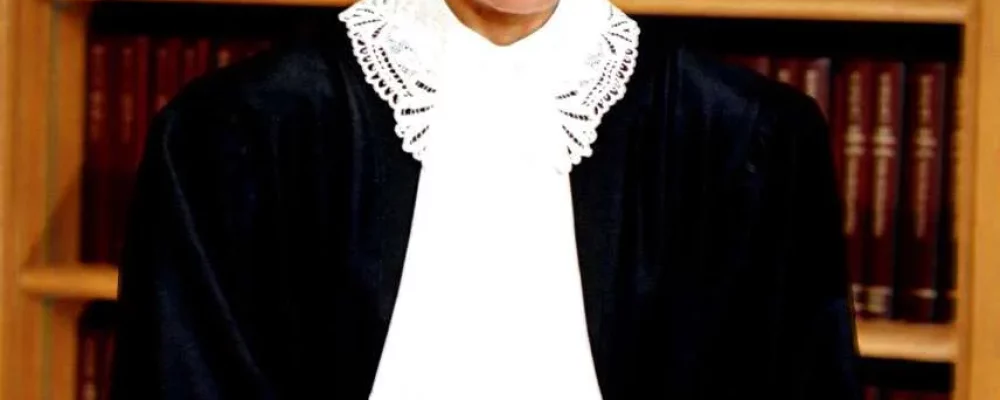Collection of the Supreme Court of the United States, Photographer: Steve Petteway
March 15, 2021 marks Ruth Bader Ginsburg’s 88th birthday. The second woman, and the first Jewish woman, to take a seat on the Supreme Court in 1993, Justice Ginsburg has been hailed as a champion of justice and gender equality for her accomplishments in the courtroom.
In the Harvard Gazette, Law Professor Tomiko Brown-Nagin reflects on several of Justice Ginsburg’s accomplishments on the Supreme Court, such as in the 1996 case United States v. Virginia, when Justice Ginsburg’s majority ruling literally opened doors for females at the Virginia Military Institute. In another case Ledbetter v. Goodyear, RBG’s oral dissent pushed President Obama to sign the Lilly Ledbetter Fair Pay Act in 2009. Throughout the 2000s, RBG “defended women’s reproductive freedom…and support gay marriage” in several critical court cases.
Landing the nickname “The Notorious RBG” in her 80s, it would be an understatement to call Justice Ginsburg enlightened for her time. As a Jewish woman who grew up during the 1940s, Ruth Bader Ginsburg was pushing boundaries long before she took her seat at the Supreme Court.
“My mother told me two things constantly,” RBG once recalled. “One was to be a lady, and the other was to be independent. The study of law was unusual for women of my generation. For most girls growing up in the ’40s, the most important degree was not your B.A., but your M.R.S.”
As one of nine women in her Harvard Law class of 500 students, Ginsburg and her female classmates were “…chided by the law school’s dean for taking the places of qualified males.” Still, according to History.com, “Ginsburg pressed on and excelled academically, eventually becoming a member of the prestigious legal journal, the Harvard Law Review.”
Ginsburg was not just a Jewish woman attending one of the most prestigious law schools during the 1950s, but a Jewish woman with a baby. When Ginsburg entered law school at Harvard, her baby, Jane, was only 14 months old. Ginsburg shares an experience from her life as a student and mother in an interview with Variety:
“…this little child of mine was creeping along the floor and (suddenly) she has a mouth full of mothballs.
I had just put some sweaters away in the drawer. I had to take her to the Cambridge City Hospital to get
her stomach pumped. I can remember hearing her screaming. That really brought home to me that
there are things in life other than law school.” -RBG.
In an interview with The Atlantic, Ginsburg speaks more about her daughter: “I contribute my success in law school largely to Jane…. I think I had better balance, better sense of proportions of what matters,” she says. “I felt each part of my life gave me respite from the other.”
When RBG’s husband Marty accepted a job in New York City, RBG transferred to Columbia to keep her family together and finish up her degree. She tied for first in her class in 1959, a major accomplishment for any student, male or female, parent or non-parent.
Fast forward into her career, and Ruth Bader Ginsburg becomes an icon for working mothers. While she was busy co-founding the ACLU women’s rights project, Ginsburg describes in her interview with The Atlantic, “Marty took over the kitchen entirely… I tell you, I appreciated that.”
At the 2018 Sundance Film Festival, RBG spoke more on her experiences as a working mother:
“So I would get called by the head of the school, the school psychologists or the room
teacher to come down immediately to hear about my son’s latest escapade. Well, one
day, I think I’d been up all night writing a brief. I was at my office at Columbia Law
School. I got the call. And I responded, this child has two parents. Please alternate calls” –RBG.
According to Joan Williams, law professor at the University of California, Hastings, one of the first things RBG did was establish “the principle that you could not treat mothers differently than fathers in a wide variety of contexts.” Williams continues, RBG “persuaded them [the members of the Supreme Court] that men and women were both in a cage from these breadwinner-homemaker roles.”
Today, Justice Ginsburg’s legacy lives on so long as the fight for equality for all men and women lives on, too.
“Real change, enduring change, happens one step at a time” –RBG.


